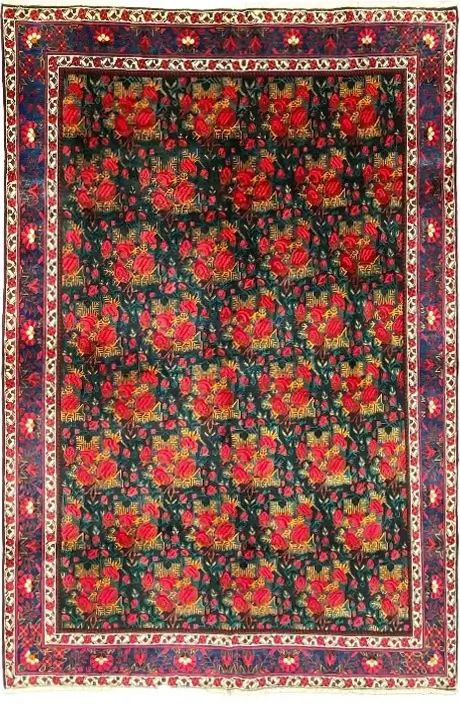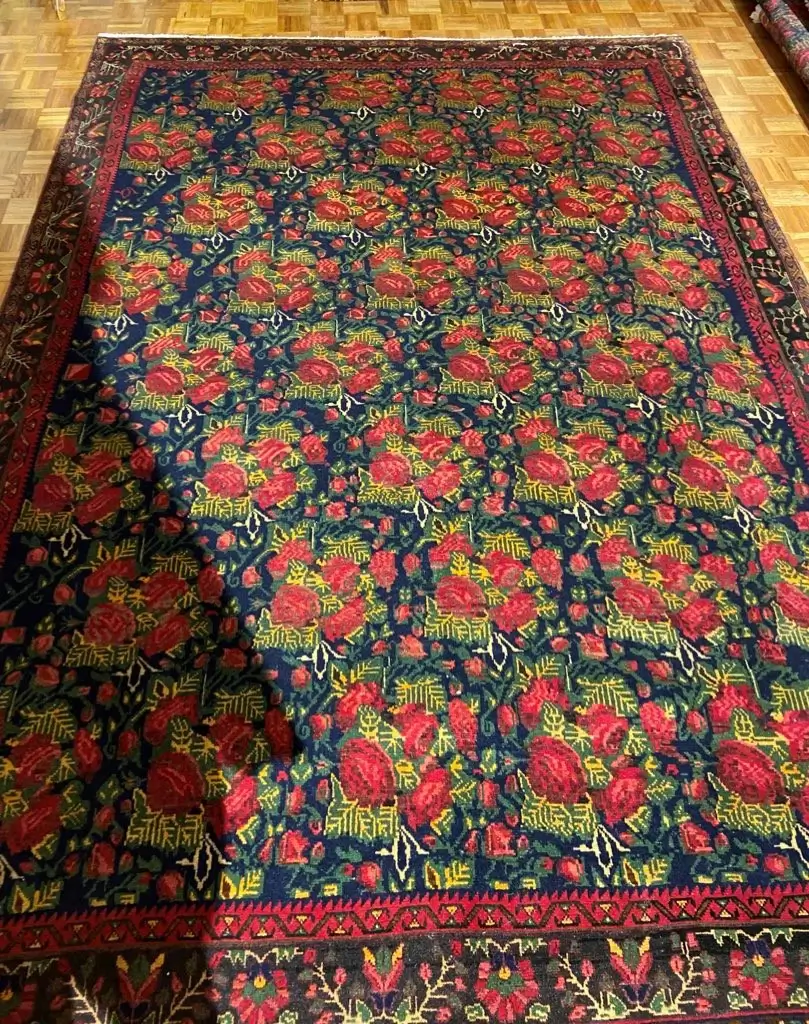Esfandaqeh Rugs

Esfandaqeh
(also
Romanized
as
Esfandagheh) is a rural district in the Central
District of Jiroft County, Kerman Province,
Iran. The rural district has 52 villages.
Jiroft is well-known for an early Bronze Age
civilization which named after the town
‘Jiroft culture’. The area is considered the
most suitable region in the entire Kerman
Province for agriculture. Thanks to its variant
climate zones, it produces both warm and
cold weather crops.
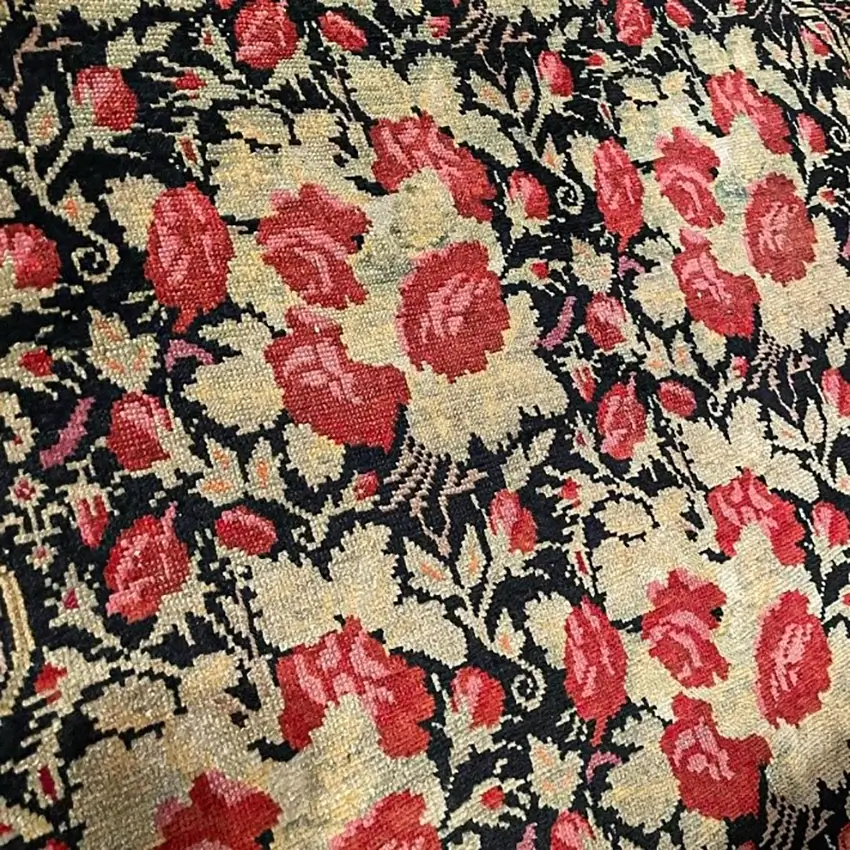
It is said that the Esfandaqeh unique design
has been taken from a fabric design the Khan
of Esfandaqeh was fond of.
Technical aspects and the structure of Esfandaqeh Rugs
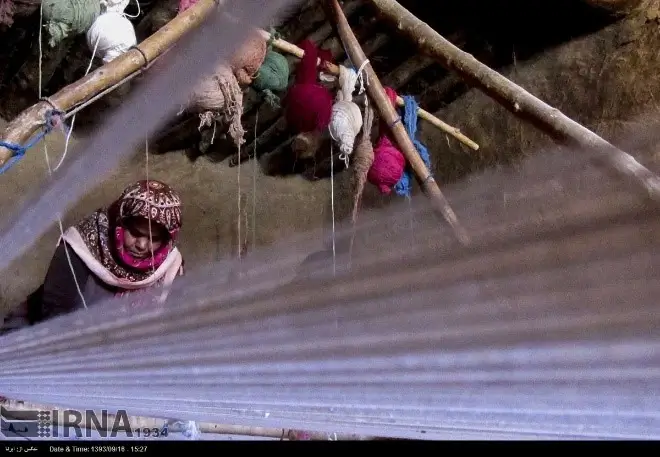
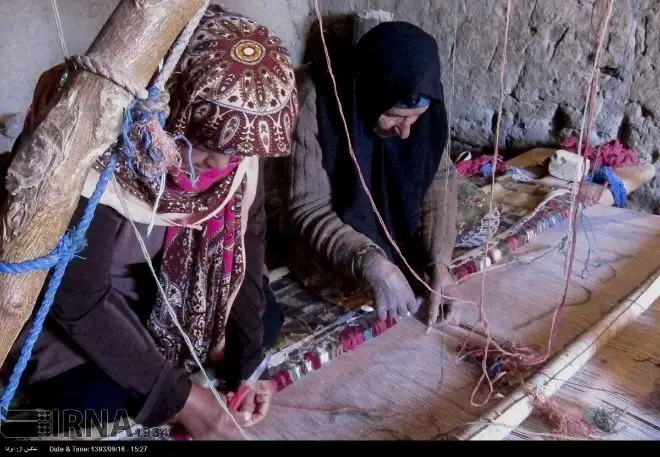
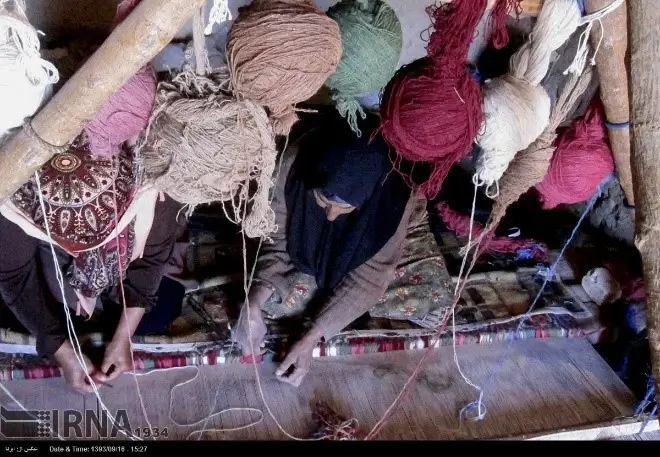
Generally knot densities are high in the
Kerman province. Knots are asymmetrical
(Persian) in Esfandaqeh. Warp and weft are
cotton. Piles are woolen. Rug sizes are
common including small area rugs.
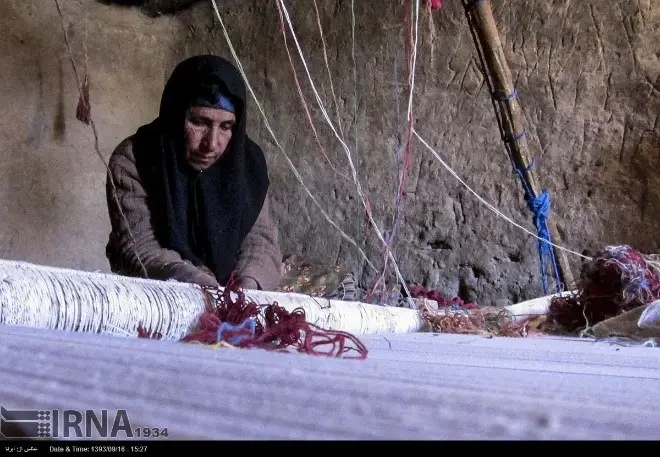
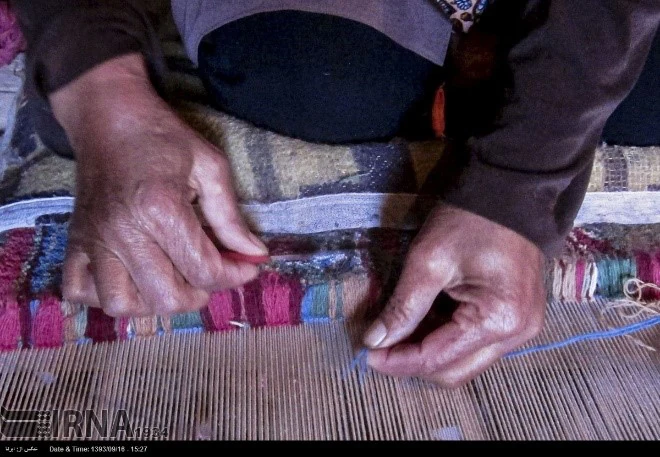
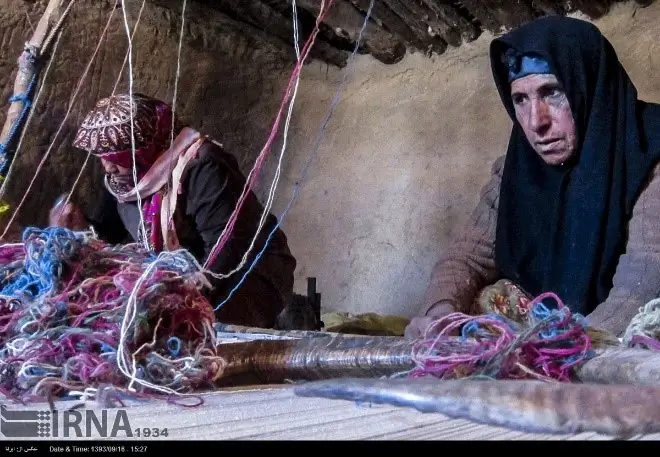
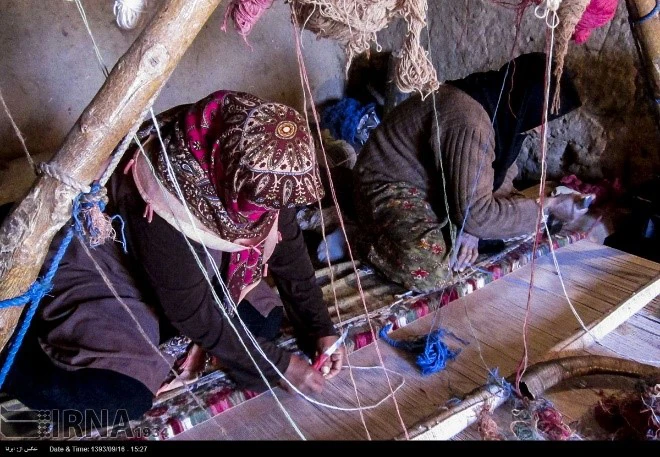
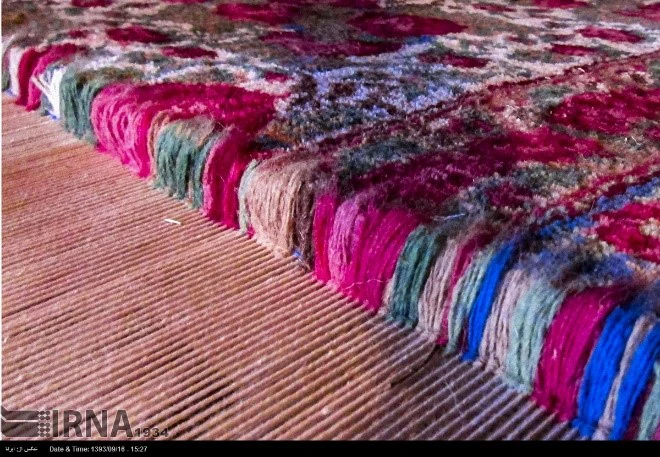
Technical aspects and the structure of Esfandaqeh Rugs
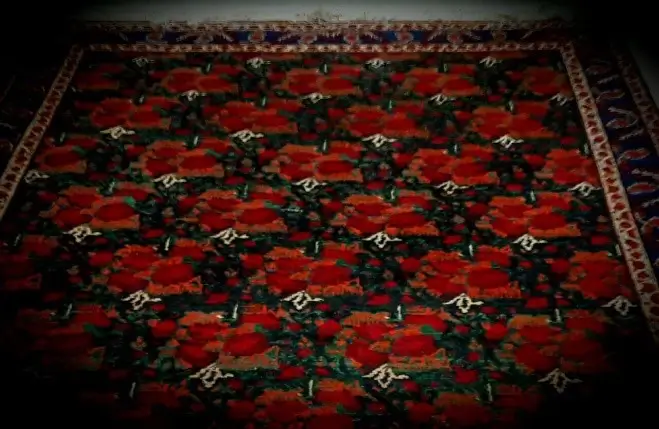
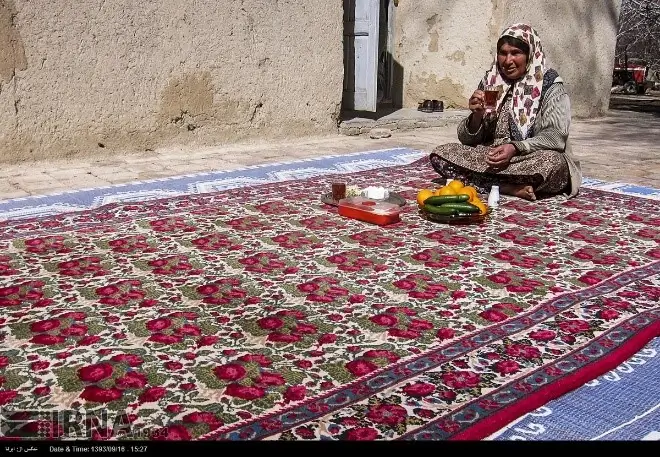
Either black or white may serve as
background. Red roses shine on both. These
could be respectively midnight blue and
ivory or simply black and white. Rosy and
pink are used for petals and green for sprays
and leaves. Margins may be camel or beige in
pieces with dark grounds.
Designs and patterns of Esfandaqeh Rugs
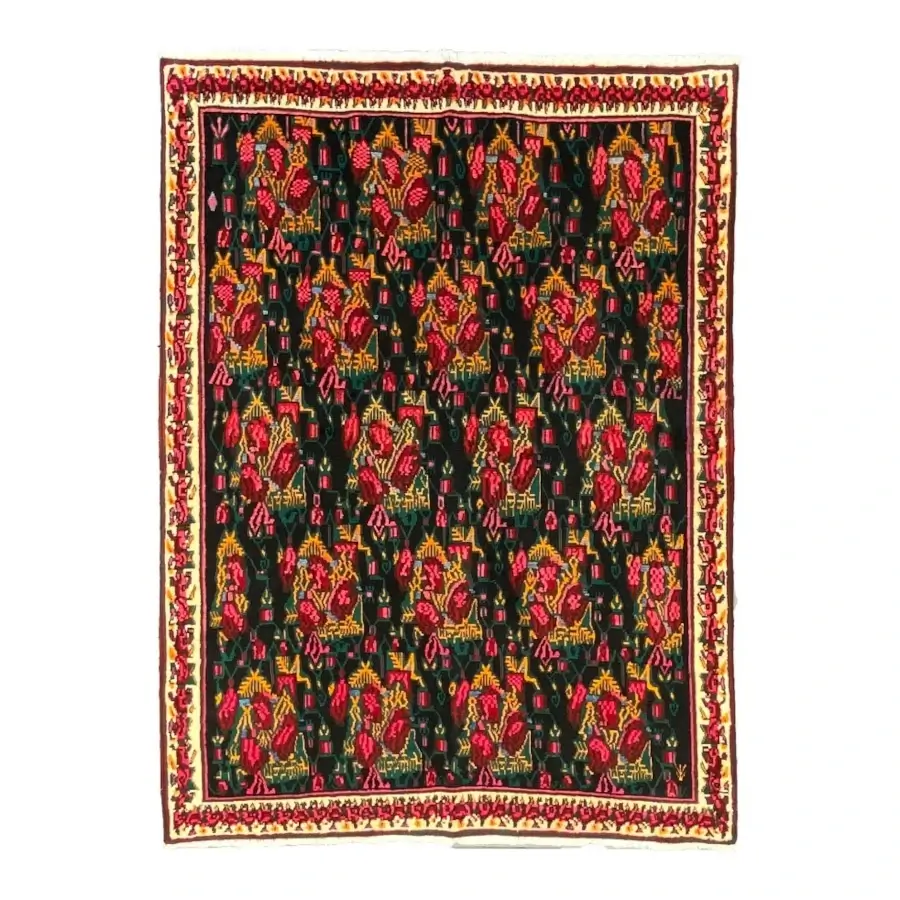
Esfandaqeh has its own design which is a
unique one, consisting of a bunch of roses
which repeats in diagonal rows. Typically
each bunch has five roses. Roses are
naturalistically-rendered. Empty spaces may
be filled with sprays of rosebuds, especially
in the pieces with white grounds.
This type of rendering roses (without dark
outlines or any sort of stylization) called Gol-
Farang or Farangi gul which litrarary mean
“French rose” or generally “European-styled
rose” referring to Aubusson and Savonnerie
designs.
